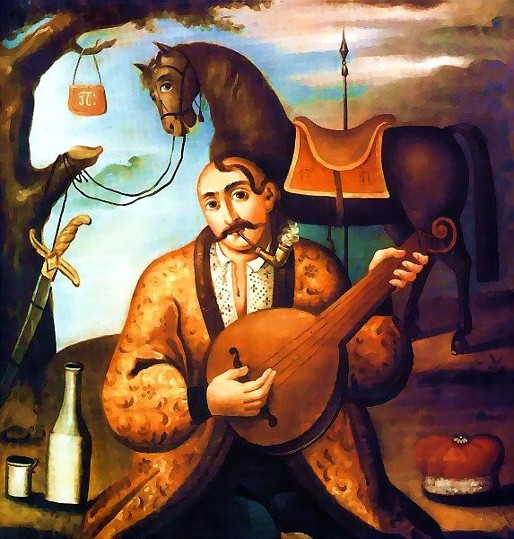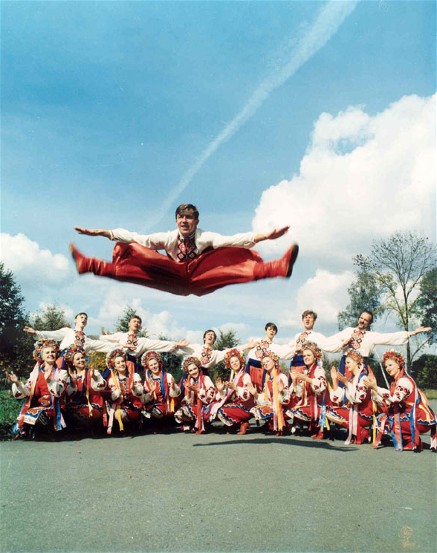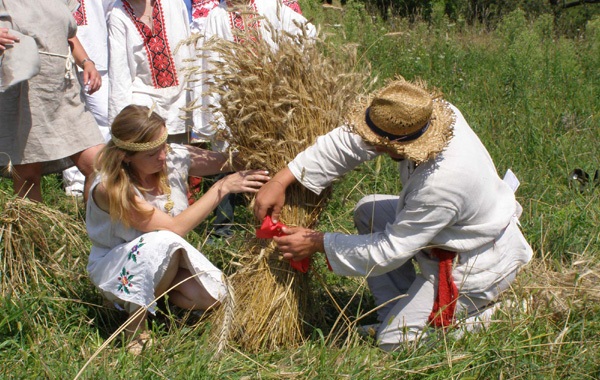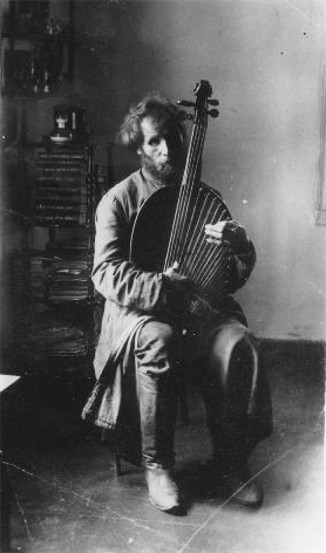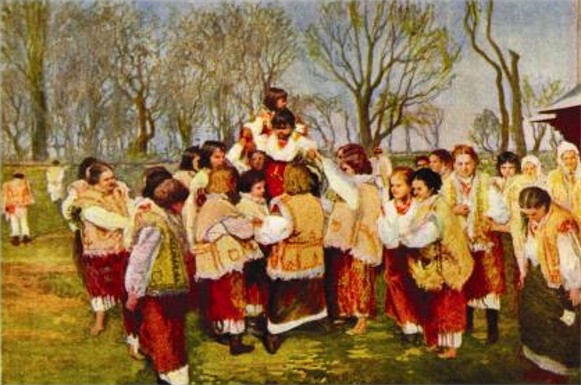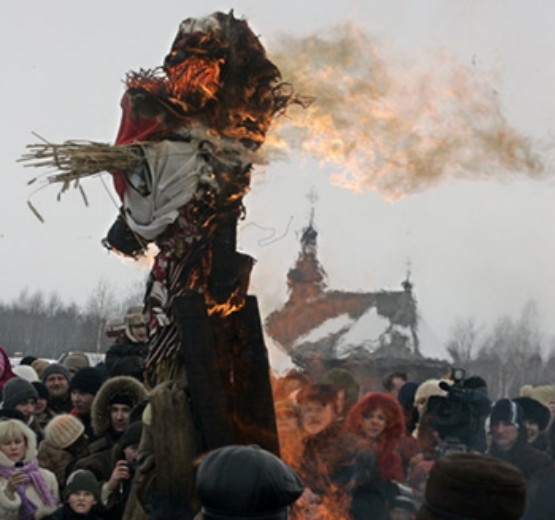Folklore
Folklore. In Ukrainian folklore scholarship there is an overwhelming tendency to equate folklore with folk oral literature. In this discipline folk tales (tales of magic, animal tales, legends, anecdotes, etc), folk songs (ritual songs and non-ritual songs), and items of the minor verbal genres (proverbs and riddles) are collected and studied. Some of the above (animal tales, some songs and games, and certain types of proverbs and riddles) are children’s folklore. Oral literature consists of variant texts whose authorship is unknown, the texts being passed along by word of mouth and in the process changed to some degree by each performer (storyteller, singer, etc).
Pre-Christian Ukrainian folk customs and rites have been described in Arabic and Byzantine sources. Other documentation of Ukrainian folklore is found in the earliest of literary monuments in Ukraine (ie, in the chronicles and Slovo o polku Ihorevi), where instances of folk prose, proverbs, and ritual songs can be found. Christianity introduced into Ukraine not only dogma but also apocryphal and classical folklore traditions.
S. Sarnicki, describing the war with the Wallachians (1506), mentions Ukrainian dumas (an epic folk-song genre). Ukrainian laments are mentioned in the writings (1551) of J. Menecius and in the poem ‘Roxolania’ (1582) by S. Klonowicz. The ‘Song of Shtefan the Voivode’ has been preserved from the middle of the 16th century in the Czech grammar of J. Blahoslav of 1571. From the 17th century on, the amount of recorded folklore material increases. Mykhailo Vozniak published, from a 17th-century collection, the oldest record of a duma text (the duel between a Cossack and a Tatar). A Polish pamphlet (1625) by J. Dzwonowski contains a popular song ‘Cossack Plakhta.’ Ukrainian folk songs are also found in manuscripts and printed songbooks of the 18th century.
The first systematic recording and publication of Ukrainian oral folklore took place at the beginning of the 19th century. Several collections appeared: Nikolai Tsertelev's Opyt sobraniia starinnykh malorossiiskikh pesen (An Attempt at a Collection of Ancient Little Russian Songs, 1819), Mykhailo Maksymovych's Malorossiiskie pesni (Little Russian Songs, 1827), and other collections published in 1834 and in 1849. In the 1830s Izmail Sreznevsky published a six-volume collection, Zaporozhskaia starina (Zaporozhian Antiquity), containing mainly dumas and historical songs with commentaries. In 1836 Platon Lukashevych published Malorossiiskie i chervonorusskie narodnye dumy i pesni (Little Russian and Red Ruthenian Folk Dumas and Songs), containing material from both central and western Ukrainian territories. Fedir Bodiansky also collected songs during this period (1830–50), although some of his collections have only recently been published—Ukraïnski narodni pisni v zapysakh Osypa ta Fedora Bodians’kykh (Ukrainian Folk Songs Transcribed by Osyp and Fedir Bodiansky, 1978). Osyp Bodiansky was also active as a publisher, critic, and editor of Slavic folklore publications. In Western Ukraine Markiian Shashkevych, Yakiv Holovatsky, and Ivan Vahylevych collected folk oral literature in the 1830s. Holovatsky continued collecting and publishing into the second half of the century. His four-volume collection of Ukrainian folk songs, Narodnye pesni Galitskoi i Ugorskoi Rusi (Folk Songs of Galician and Hungarian Ruthenia, 1878), is his greatest publication.
The historian Mykola Kostomarov wrote a dissertation—Ob istoricheskom znachenii russkoi narodnoi poezii (On the Historical Significance of Russian Folk Poetry, 1843)—and several articles on the historical aspects of Ukrainian folk songs. The main contribution to Ukrainian folklore, by the author and poet Panteleimon Kulish is the two-volume collection Zapiski o Iuzhnoi Rusi (Notes on Southern Rus’, 1856–7), which provides not only texts but also annotations about the informants (a basic stipulation for modern folklore collecting). Kulish's ‘Pohliad na usnu slovesnist' ukraïns'ku’ (A View on Ukrainian Oral Literature, Pravda, 1870) illustrates the romantic-populist interpretation of folklore. The best 19th–century Ukrainian proverb collection was published by Matvii Nomys in 1864 as Ukraïns’ki prykazky, prysliv'ia ta inshe (Ukrainian Proverbs, Sayings, Etc).
The largest organized folklore collecting in Ukrainian territories under Russia in the 19th century took place under the leadership of Pavlo Chubynsky. The seven-volume publication that appeared between 1872 and 1878 contains texts on various aspects of folklore and folkways: tales, proverbs, folk songs, folk beliefs, calendric and other folk customs and rites, as well as dialects and observations on the national minorities in Ukraine. The Chubynsky collections were a great stimulus for further folklore scholarship. Mykhailo Drahomanov adhered to the theory of type and motif borrowing in folklore. He edited several collections of folk prose as well as of historical songs and political folk songs. The philologist Oleksander Potebnia analyzed folk songs with regard to customs, beliefs, and symbols. Two other philologists—Mykola Sumtsov and Borys Hrinchenko—contributed greatly to the study and publication of Ukrainian folklore material at the turn of the century. Sumtsov wrote a number of short articles and longer studies on a variety of folklore topics (wedding and calendric customs, apocryphal tales, bylyny, dumas, incantations). His synthesis of Ukrainian ethnography, Sovremennaia malorusskaia etnografiia (Contemporary Little Russian Ethnography, 2 vols, 1893, 1897), is also important. Hrinchenko published collections of folk prose and the first bibliography of Ukrainian folklore, Literatura ukrainskogo fol’klora (1777–1900) (The Literature of Ukrainian Folklore [1777–1900], 1901).
The turn of the century saw an impressive number of folklore collections and studies from Western Ukraine. The Shevchenko Scientific Society started publishing ethnographic collections and established a separate Ethnographic Commission of the Shevchenko Scientific Society. Its work centered around the two serials Etnohrafichnyi zbirnyk, which consisted of 40 volumes of annotated texts of oral folklore genres, and Materiialy do ukraïns’koï etnolohoiï, consisting of 22 volumes of works with an anthropological direction. Two outstanding members of the commission were Ivan Franko and Volodymyr Hnatiuk. Franko wrote numerous articles on folk oral literature, but his greatest contribution to Ukrainian folklore remains his six-volume edition of Ukrainian proverbs, Halyts’ko-rus’ki narodni prypovidky (Galician-Ruthenian Folk Proverbs), published as part of Etnohrafichnyi zbirnyk. The most productive ethnographer and folklorist of this period was V. Hnatiuk. He was responsible for the publication of most of the volumes of Etnohrafichnyi zbirnyk, contributing on a variety of folklore genres as editor, collaborator, collector, and critic. One of his singular achievements is the six-volume Etnohrafichni materiialy z Uhors’koï Rusy (Ethnographic Materials from Hungarian Ruthenia). His publication (together with P. Tarasevsky) Das Geschlechtsleben des ukrainischen Bauernvolkes in 1909–10 is also noteworthy.
In the interwar period there was a lull in folklore studies in Western Ukraine in comparison with the days prior to the First World War. In contrast, the twenties were marked by an explosion of activity in Soviet Ukraine exemplified by the growth of a multitude of commissions, museums, societies, committees, and institutes. These activities came to almost a complete halt in the thirties. In Western Ukraine the outstanding folklorist of the period was the musicologist Filaret Kolessa, who had published before the First World War; he continued his work on a variety of musical genres and regional music, wrote encyclopedia articles, and published the first Ukrainian school text (an introduction and a reader) devoted solely to oral folklore, Ukraïns’ka usna slovesnist’ (Ukrainian Oral Literature, 1938). A contemporary of Kolessa's was the literary scholar Mykhailo Vozniak, who published a number of manuscripts containing folk songs and dumas from the 17th and 18th centuries.
The historian Mykhailo Hrushevsky, who as president of the Shevchenko Scientific Society in the period before the First World War had published the first two volumes of Etnohrafichnyi zbirnyk, continued his work in the Ukrainian SSR. Parts of his Istoriia ukraïns’koï literatury (History of Ukrainian Literature) are valuable in Ukrainian oral folklore studies. His daughter, Kateryna Hrushevska, published a two-volume collection of the duma genre. Another musicologist of note was Klement Kvitka, whose publications are numerous. His collection Ukraïns’ki narodni melodiï (Ukrainian Folk Melodies, 1922), containing over 700 melodies of various genres of Ukrainian folk songs, is still an important source for Ukrainian musicologists. Of the prose collections published in this period, only Mykola Levchenko's Kazky ta opovidannia z Podillia v zapysakh 1850–1860kh rr. (Folk Tales and Stories from Podilia Transcribed in the 1850s and 1860s, 1928), containing collections made by Andrii Dyminsky and Stepan Rudansky, is of any importance. The leading ethnographic journal was Etnohrafichnyi visnyk (1925–32), and the most complete bibliography up to 1916 was published by Oleksander Yu. Andriievsky (1930).
The years after the Second World War have meant a renewal of folklore activity in Soviet Ukraine. This activity revolved particularly around the bimonthly periodical Narodna tvorchist’ ta etnohrafiia and the planned 35-volume series Ukraïns’ka narodna tvorchist’ (Ukrainian Folk Creativity). (See also Ethnography.)
BIBLIOGRAPHY
Andriievs’kyi, O. Bibliohrafiia literatury z ukraïns’koho fol’kloru, 1 (Kyiv 1930)
Kolessa, F. Ukraïns’ka usna slovesnist’ (Lviv 1938; 2nd edn, Edmonton 1983)
Ukraïns’ka narodna poetychna tvorchist’: Radians’kyi period, 2 vols (Kyiv 1958)
Berezovs’skyi, I. Ukraïns’ka radians’ka fol’klorystyka (Kyiv 1968)
Klymasz, R. ‘Folklore Politics in the Soviet Ukraine: Perspectives on Some Recent Trends and Developments,’ in Folklore, Nationalism, and Politics, ed F.J. Oinas (Columbus, Ohio 1978)
Dovzhenok, H. Ukraïns’kyi dytiachyi fol’klor (Kyiv 1981)
Bohdan Medwidsky
[This article originally appeared in the Encyclopedia of Ukraine, vol. 1 (1984).]
